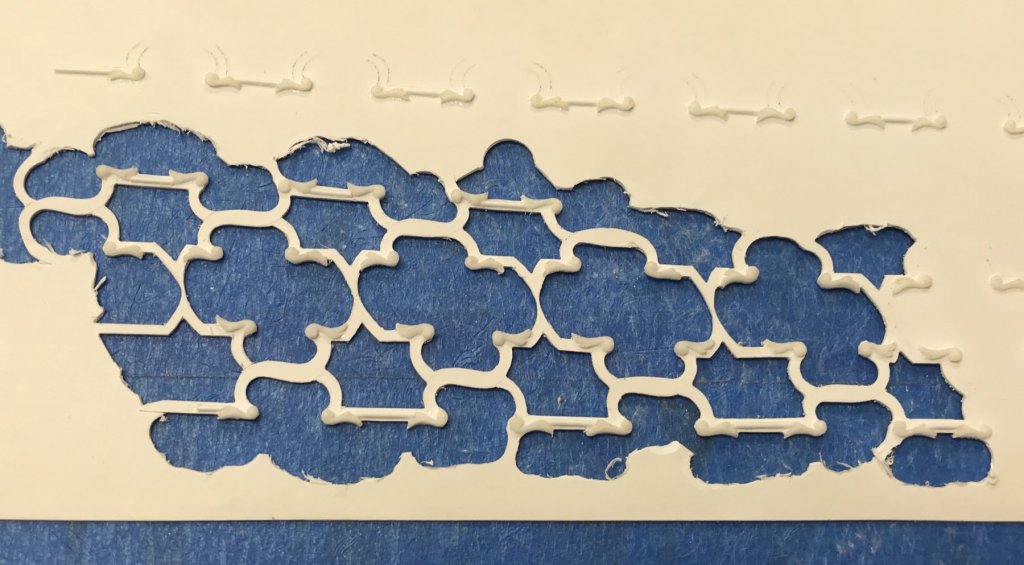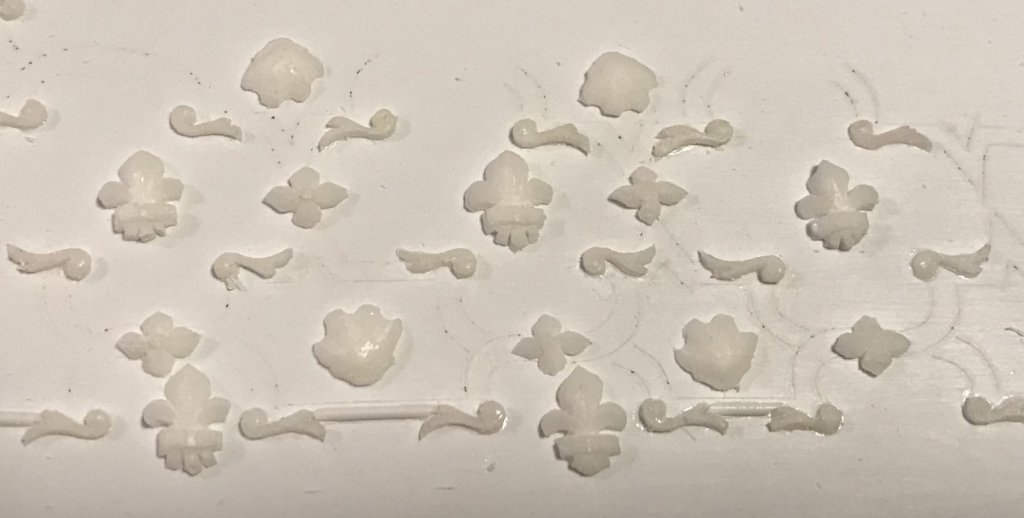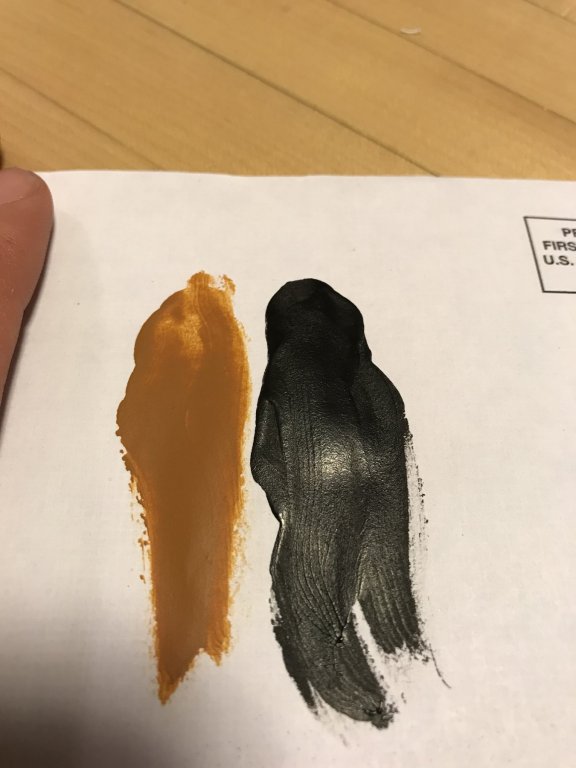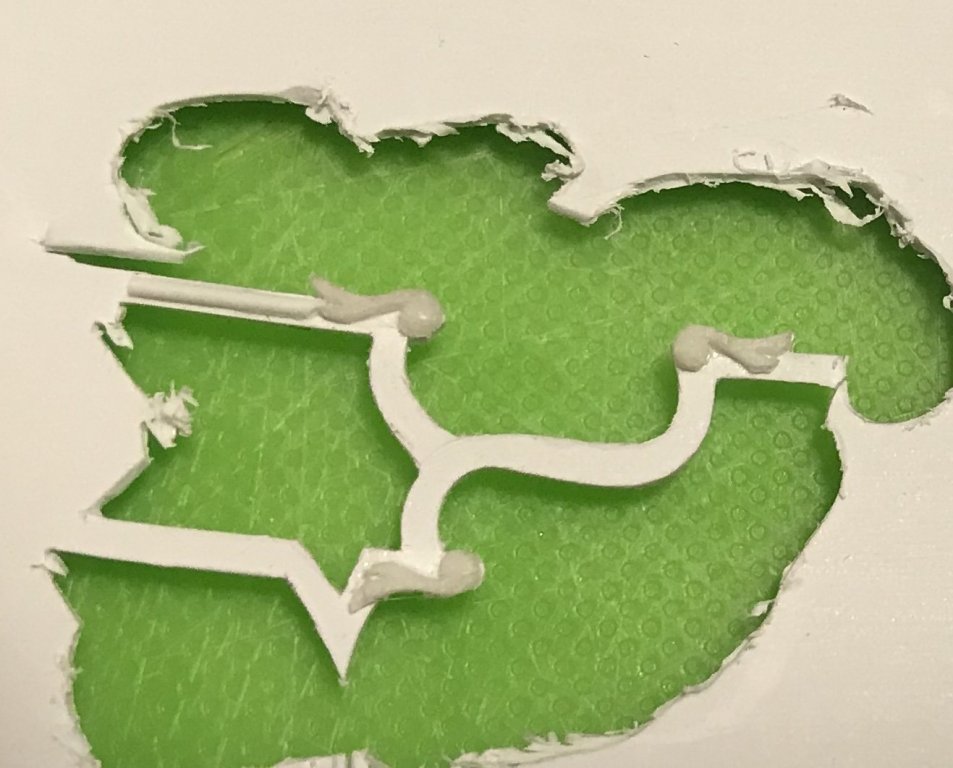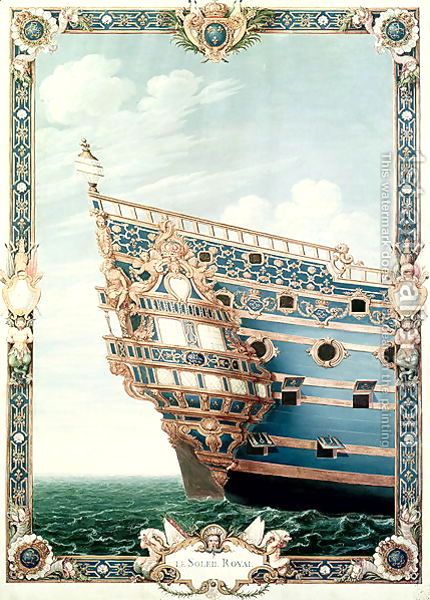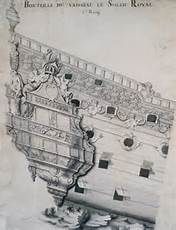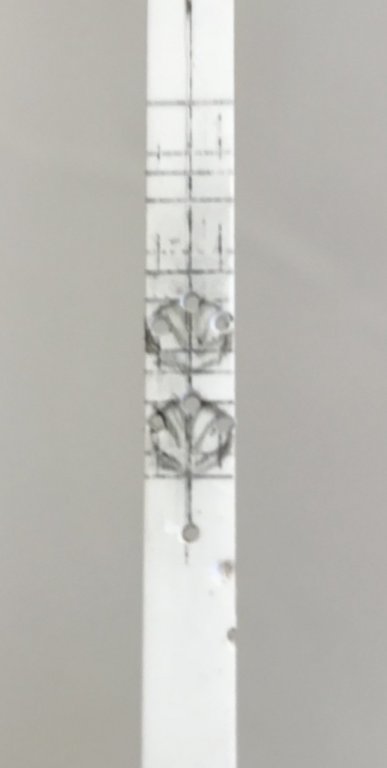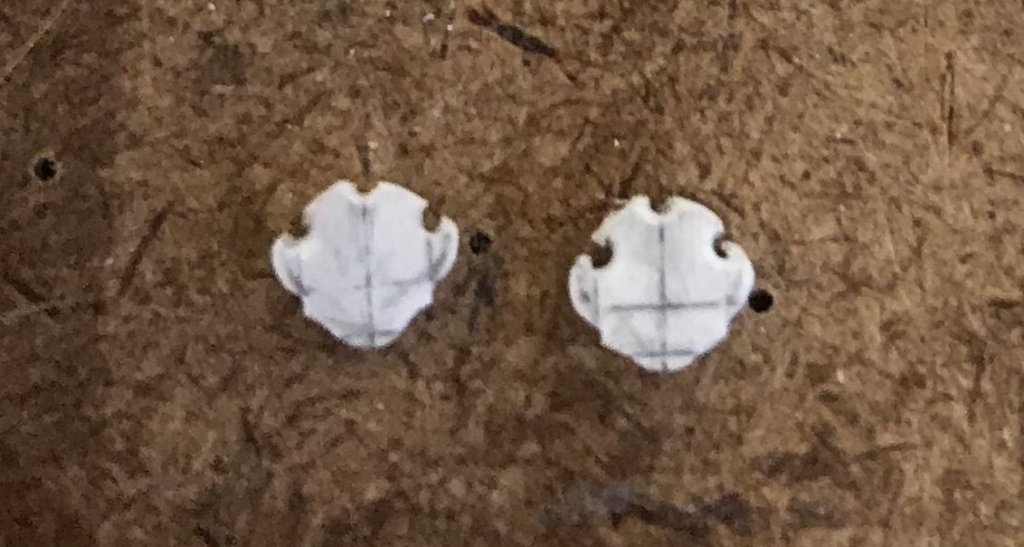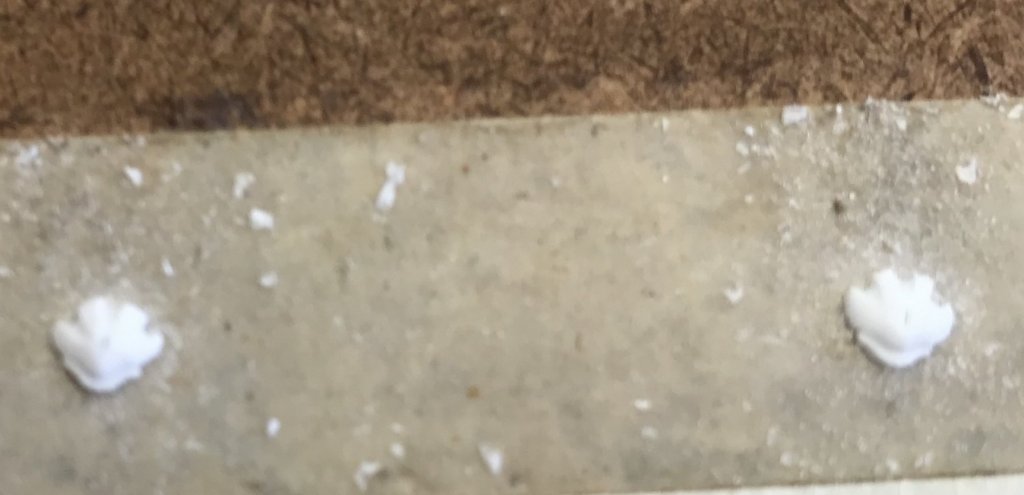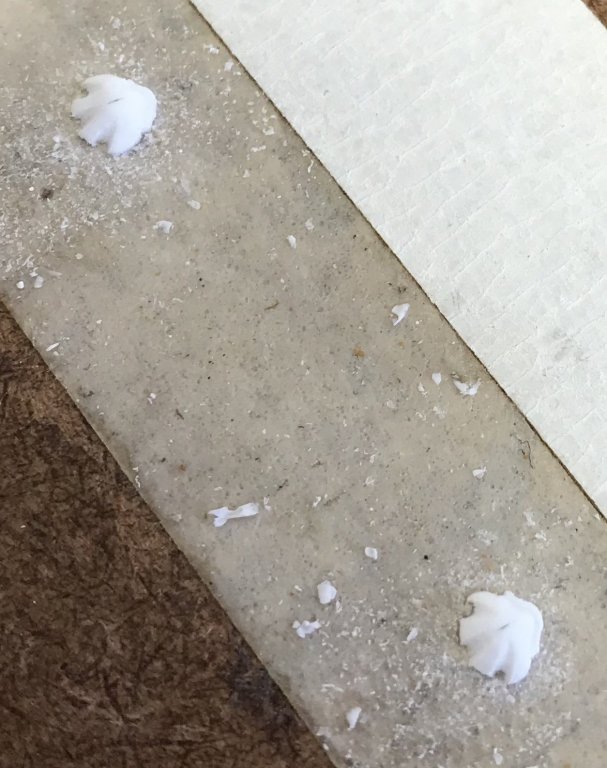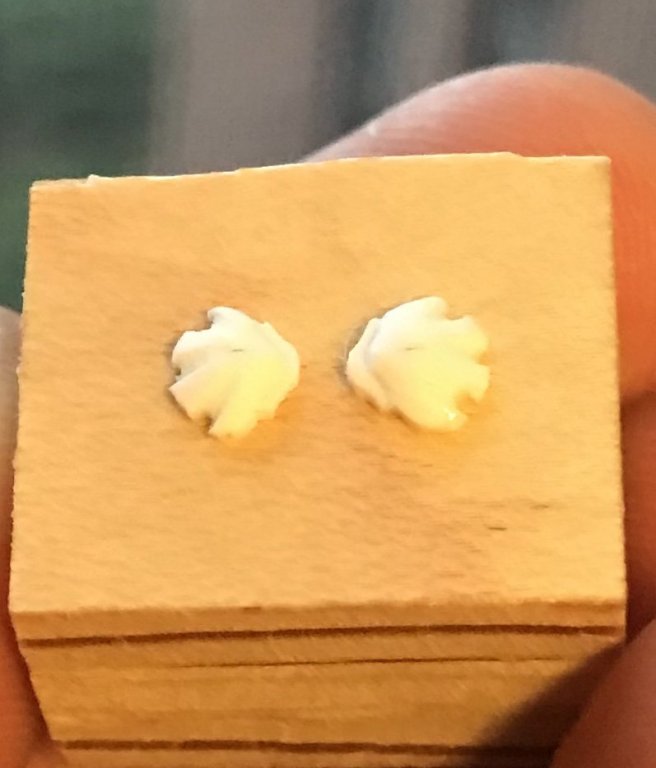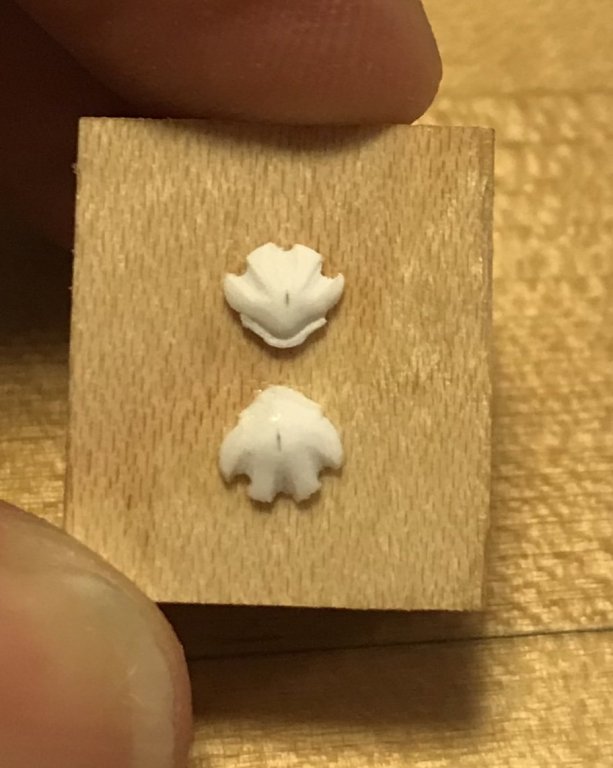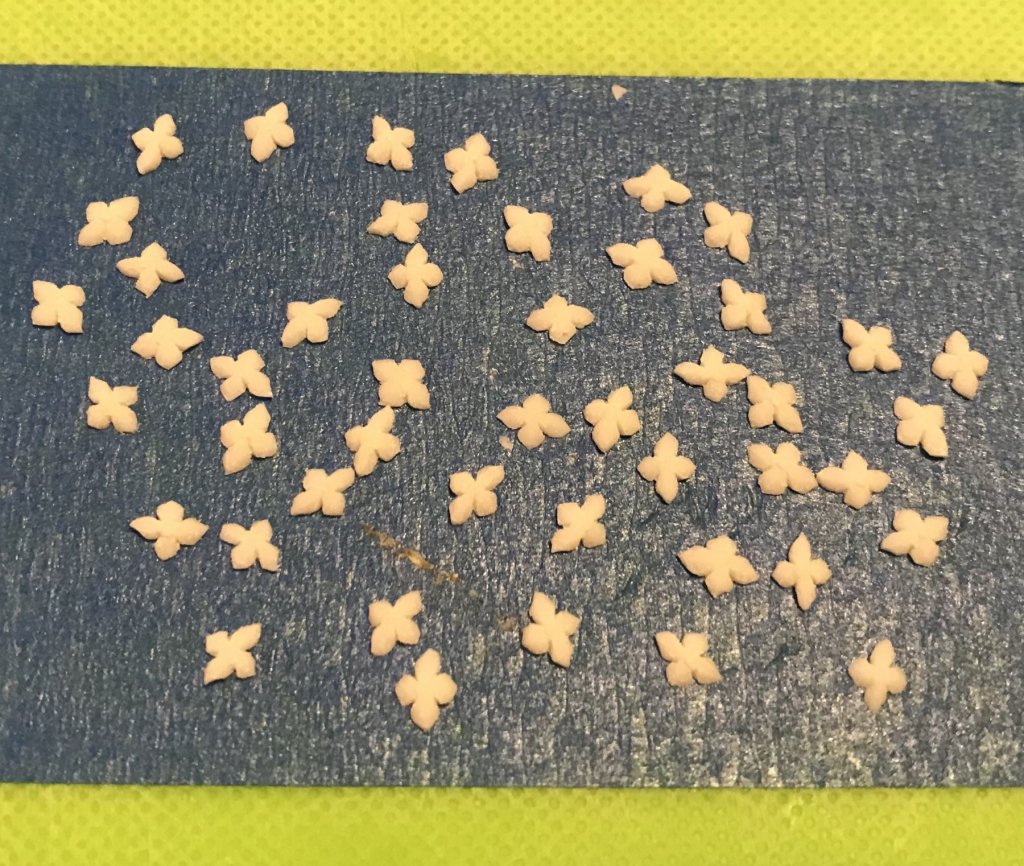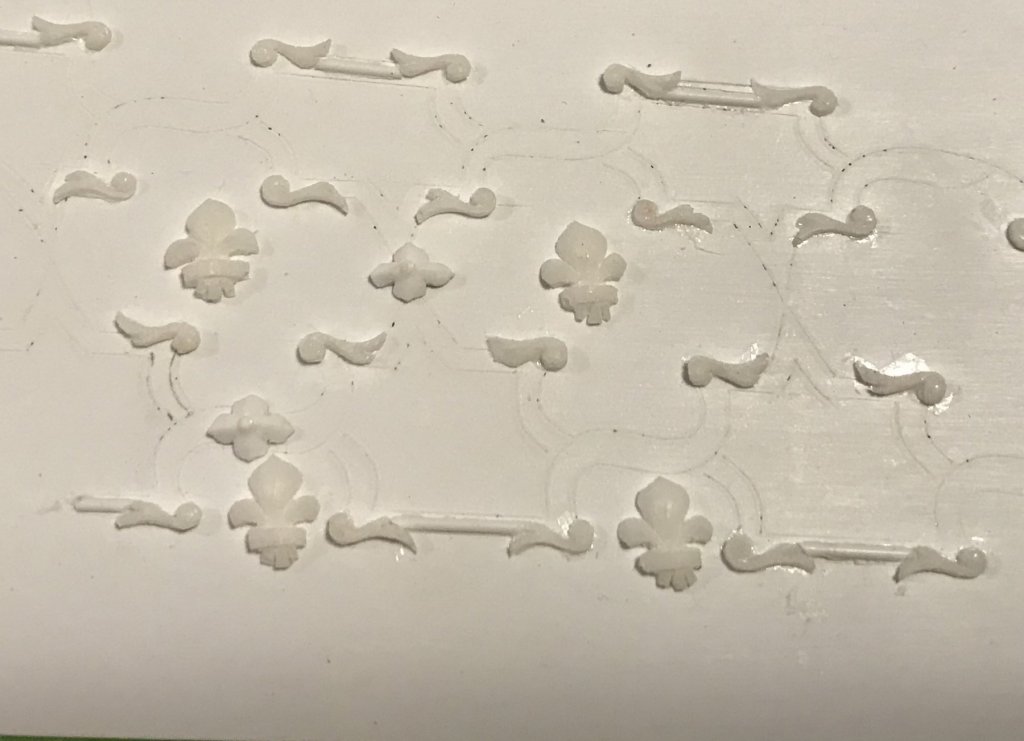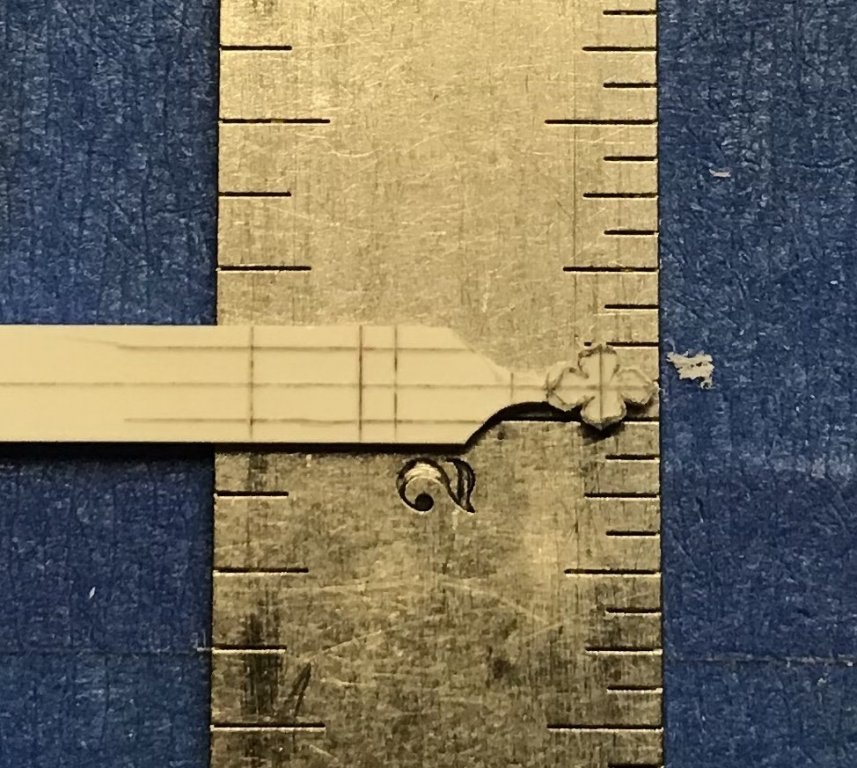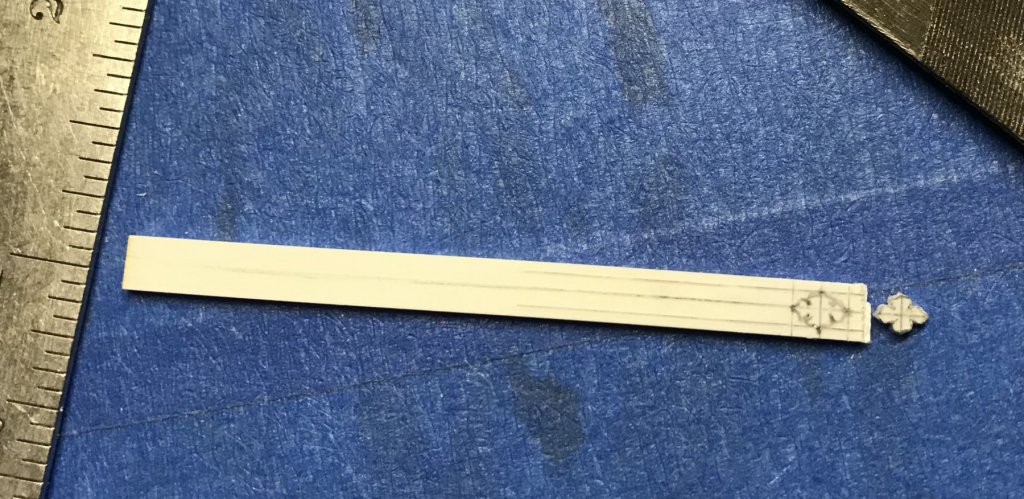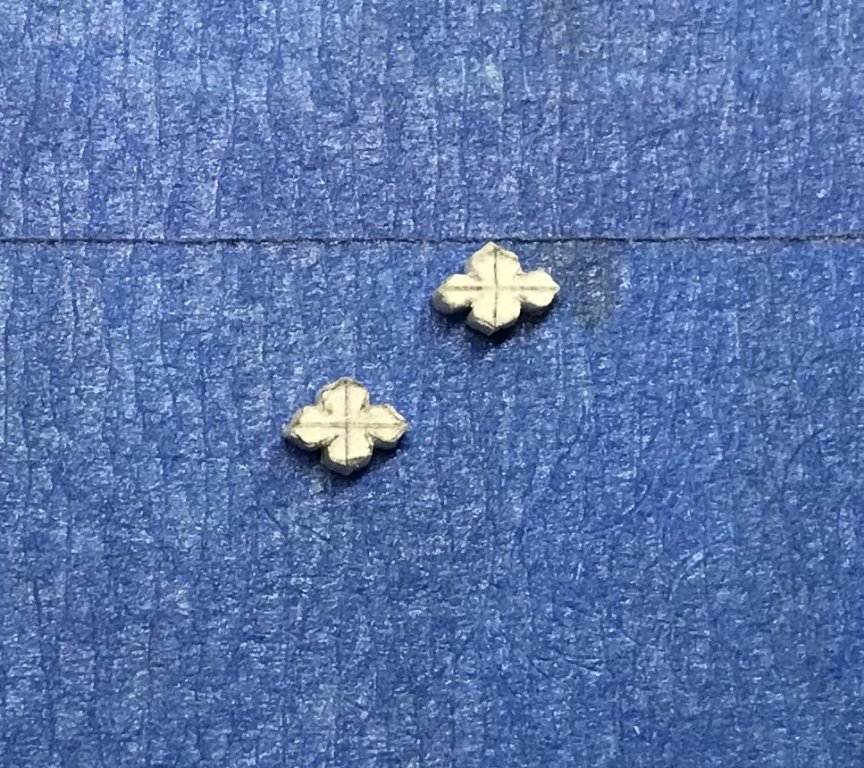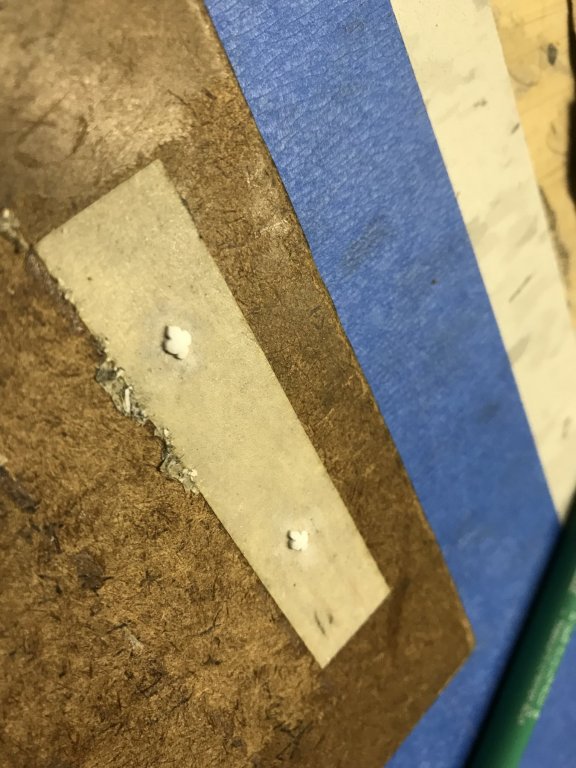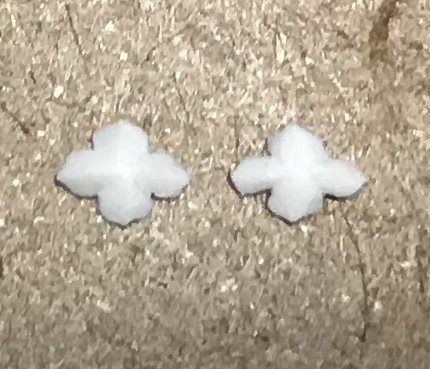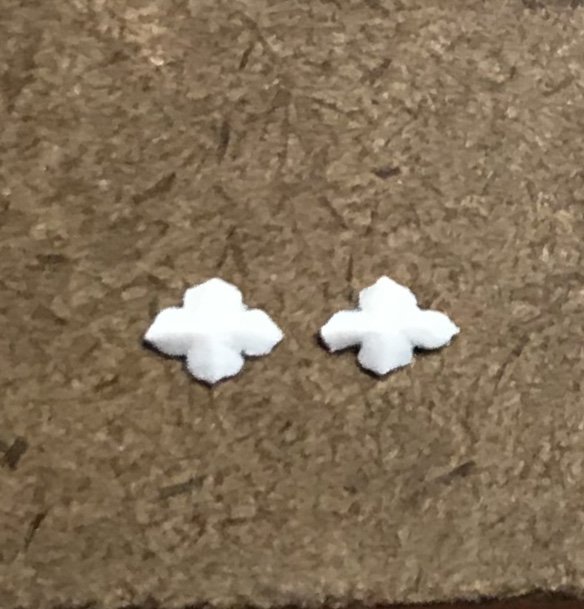-
Posts
3,292 -
Joined
-
Last visited
Content Type
Profiles
Forums
Gallery
Events
Everything posted by Hubac's Historian
-
Thank you very much, Backer! I hadn’t built a model in such a long time - not since a never completed Airfix Vasa that was coming along nicely until I learned that the upper works were actually red and not blue. I then lost interest, continued to carry it around with me through several moves, and finally shipped it to the great beyond, down the compactor chute, after so many parts had broken off. I regret it, now, because the paint work was really good, but it was pretty much a stock build. Fast-forward to now, and I have learned to enjoy the experimental possibilities and to try and push the craft to my limits. That keeps the challenge fresh and my interest stoked. It also gives me something productive to do at lunch and in the time before work. Little by little, day by day. It won’t be long before all of these modifications begin to take shape as an assembled thing. Thank you, again, and thank you to everyone who has stuck around. It is greatly appreciated!
- 2,696 replies
-
- heller
- soleil royal
-
(and 9 more)
Tagged with:
-
The lattice is coming, but it is incredibly tedious work to free it. I’ve cut across the lattice, at times, and had to fit in graving pieces. That is the beauty of plastic, though; repairs like that are easy and will be seamless on the finished model. The scrolls are fiddly and often come loose. I’ve taken to brushing the edges of the scrolls with cyano, as a preventative measure, as they come free of the ground. With all the ornaments made, now, I couldn’t resist placing them in a small section to see the spacing: I’m very happy with this, and it gives me the motivation I need to continue chipping away at the lattice. Finally, I’ve begun experimenting with acrylics. Grumbacher’s Academy line produces a Raw Sienna that perfectly captures my interpretation of the “Ventre de Biche” color that will span the lower and middle batteries, between jet black boot topping and wales: I’m glad, now, that Marc Yeu prevailed upon me to consider more period-correct, painted appearance for the so called “dead works,” which are iron fastened. I have some ideas about how to lightly weather the painted finish, so that it makes for a more realistic diorama. I’ll discuss that more, in detail, as I work through paint tests on my scrap hull.
- 2,696 replies
-
- heller
- soleil royal
-
(and 9 more)
Tagged with:
-
Well, this is going to work out beyond my expectations, but it is going to take some doing! Naively, I really thought a few passes, re-tracing my lines, would free the lattice. No biggie! Not so. The styrene is thicker than I thought, and one really does have to work up to the line very carefully. I did, in fact, lever off one of my scrolls by pressing up too hard against it with my gouge. Added to that, the lines are near-impossible to see with my diffuse kitchen lighting. The flourescent overheads, at work, give me better raking light, so I may have to do a lot of this on my breaks. Or, pencil in my scribe lines. We’ll get there, eventually, and the effort will be worthwhile 😅.
- 2,696 replies
-
- heller
- soleil royal
-
(and 9 more)
Tagged with:
-
Wow, that is very nearly a 10:1 length to breadth ratio. She must have really cut through the water! Might any naval architects in the audience venture a guess about her broadside stability in a rolling sea?
- 238 replies
-
- leviathan
- troop ship
-
(and 2 more)
Tagged with:
-
Well, Jan, you raise an interesting question, and it is one that I have considered. In my view, it is a matter of interpretation, in part, that is bolstered by certain practical considerations, at this scale. In the black and white Berain drawing, I think one can argue an interpretation for either a concave or convex shell. There do, however, appear to be subtle shadows around the perimeter of some of the shells, that suggest a rounded form: The color, Compardel portrait that is based upon this original Berain portrait is, itself, an artistic interpretation with a number of subtle differences, and a marked contrast in the quality of the rendered details (Berain’s drawing is just crisper). All that aside, Compardel definitely argues for a convex form. In addition to the shadows, Compardel even represents the striated surface texture that runs across the crenelated ridges of the shell. It is, perhaps, not readily apparent in this image, but it is very clear on the dust jacket for Lemineur’s Les Vaisseaux du Roi Soleil: While I agree, Jan, that much ornamental architecture and furniture embellishment, from this period in the latter 17th C., employs concave shell forms, that does not appear to be the intent, here. Even if that were the case, though, I would still have chosen the convex shell form because it is much easier to carve that particular edge treatment (ridge/scallop/ridge) into a convex form, at such a small scale. This particular edge treatment is an artistic variance from the drawings that I prefer over the rolling, fluffy cloud edge. As ever, I appreciate the question and the debate. That is, in large part, what I am hoping to encourage with this model, as most of the choices I am making are debatable, either historically or artistically.
- 2,696 replies
-
- heller
- soleil royal
-
(and 9 more)
Tagged with:
-
It was important to me that the shells come out something like the way I drew them. I am happy with the masters:
- 2,696 replies
-
- heller
- soleil royal
-
(and 9 more)
Tagged with:
-
Well, that is at least one advantage of our awful vinyl composition tile flooring that I have stubbornly refused to sheeth with somewhat nicer laminate flooring. Often, but not always, I can find them!
- 2,696 replies
-
- heller
- soleil royal
-
(and 9 more)
Tagged with:
-
One step closer... I’ve made all of the foliate diamonds. I have 46 to choose from, but will only need about 36. They came out better than I had hoped. As I did with the fleurs, there was some re-shaping here and there. Now, they are reasonably consistent, but each just a little different. Tonight, I scribed the layout for the shells, and I’ll begin carving those masters tomorrow. I can also begin freeing the frieze lattice from the sheets they were scribed on, now that all the scrolls and perimeter mouldings are in place, and the excess glue has been scraped away.
- 2,696 replies
-
- heller
- soleil royal
-
(and 9 more)
Tagged with:
-
So, your model will truly be a Leviathan, coming in at just under 5’, in length! Is that correct - 1/16” to the foot? This will be primarily an upstate build, no? Well, I look forward to following this one, as the large scale affords you endless opportunities to add detail. Although, I can’t help but wonder whether the museum has provided you with perameters on the level of detail they are interested in seeing and paying for, of course.
- 238 replies
-
- leviathan
- troop ship
-
(and 2 more)
Tagged with:
-
I really like your solution to the base, Dan. Understatement, there, is best because it really allows the model to shine, and shine she does! I am sure that you will not have any difficulty finding a buyer for her. Congratulations on a job well done!
- 287 replies
-
- michelangelo
- ocean liner
-
(and 1 more)
Tagged with:
-
Even with a film finish on it, top and bottom, a solid-wood plinth will expand or contract with the ambient changes in humidity, as the seasons change. A single, solid, quarter-sawn board (name your species) that is large enough for the 1/96 Connie - say 14-16", minimum (I'm really approximating, here!), will expand and contract +/- a heavy 1/16", varying with the species. Edge glueing smaller width planks to make up that 14-16" helps reduce and equalize that movement, but the gains are not significant and the cost comes with the finished appearance of the base that will show the multi-edge glued planks of the base. No matter what, the plexi ends of the case will not move at all, to accommodate the expansion/contraction of the base, so eventually (and I imagine rather quickly), the plexi joints will fail and the plexi case will collapse upon your finished model. Many years before I became a woodworker, I had a very reasonably priced case made for my first Soleil Royal. It was a cabinet-grade ply base, with plain mahogany veneers, and nice sapele, solid edge band. The perimeter mortise that was cut for the plexi (at the juncture of the solid edge-band) allows some room for ease of installation of the glass (which is heavy!), but also for the minimal movement that one can expect with plywood, even. After 20+ years, that case is still together and good looking as the day it was made.
- 49 replies
-
- constitution
- revell
-
(and 1 more)
Tagged with:
-
Awesome thinking outside the hobby box!
-
Just a cautionary reminder about your base plinth - if you use solid pecan, for example, that is edge glued and a channel cut for your plexi; the wood will expand, but your plexi won't. Veneered plywood with solid, moulded edging is always a good choice when making frameless plexi cases. Otherwise, I wish you luck on your Connie build. You're off to a great start!
- 49 replies
-
- constitution
- revell
-
(and 1 more)
Tagged with:
-

New member, still deciding ........
Hubac's Historian replied to CPDDET's topic in New member Introductions
Welcome to MSW, Dave! This is a tremendous place to be and there are many friendly modelers who go above and beyond to share their knowledge and craft, and often, their spare parts! I hope the hobby will take root in your brain and that you'll become an active member of the community. All the best, Marc -
The cordless Dremel Micro is a fabulous tool that balances well in the hand without fatigue, and has decent battery life, great RPMs, and minimal chatter or vibration. Now, it isn't anything near the quality of the dental rotary tools, but for the price it absolutely can't be beat. I have roughed through so much plastic on just one coarse sanding sleeve, and it still cuts just as well as when it was new. I use it constantly to waste material, and with some practice I've even managed to get closer to finish work with this tool. Hands-down, it is the best investment I've made for my project and I use it almost every day.
- 209 replies
-
- constitution
- revell
-
(and 1 more)
Tagged with:
-
Just a small sample size to see how the spacing is working out: The shell carvings are yet to be made, but I think this is going to work out just fine.
- 2,696 replies
-
- heller
- soleil royal
-
(and 9 more)
Tagged with:
-
Hi Jan, One inch is equivalent to 25.4mm, so each 1/16 of an inch is equal to 1.58mm. With that in mind, my carvings measure: 4.76 x 3.17mm Not quite micrometer-worthy, but small, nonetheless.
- 2,696 replies
-
- heller
- soleil royal
-
(and 9 more)
Tagged with:
-
So, these folliate diamonds proved to be the most vexing little things to draw! It was important to me that I hold a specific size - 3/16” x 1/8”, in order to better accommodate the fleur-de-lis positioned just below the Xs. While bigger than the scrolls, conveying a slight sense of asymmetry among the four fronds was more difficult than I expected. Both finished carvings are faceted along the fronds, and I will add a round button to the centers, before making my moulds. Below, you can get a sense of the pre-carving rounding over of the fronds: Although, the overall dimensions are exactly the same, the visual weight between the carvings varies: I will use this to my advantage by placing the heavier looking ornament on the Xs, and the lighter ornament between points of the frieze lattice. Try as I may, I just could not get a decent shot of the faceting of these things, but they are much crisper, in person, than these pictures would have you believe.
- 2,696 replies
-
- heller
- soleil royal
-
(and 9 more)
Tagged with:
-
Hello Force9, I am fascinated by your excellent modification of this iconic kit. The standard you are working to is quite high, and perfectly exemplifies the notion that one can make a serious model from a plastic kit. I will be following along with great interest. All the best, Marc
- 446 replies
-
- Revell
- Constitution
-
(and 1 more)
Tagged with:
About us
Modelshipworld - Advancing Ship Modeling through Research
SSL Secured
Your security is important for us so this Website is SSL-Secured
NRG Mailing Address
Nautical Research Guild
237 South Lincoln Street
Westmont IL, 60559-1917
Model Ship World ® and the MSW logo are Registered Trademarks, and belong to the Nautical Research Guild (United States Patent and Trademark Office: No. 6,929,264 & No. 6,929,274, registered Dec. 20, 2022)
Helpful Links
About the NRG
If you enjoy building ship models that are historically accurate as well as beautiful, then The Nautical Research Guild (NRG) is just right for you.
The Guild is a non-profit educational organization whose mission is to “Advance Ship Modeling Through Research”. We provide support to our members in their efforts to raise the quality of their model ships.
The Nautical Research Guild has published our world-renowned quarterly magazine, The Nautical Research Journal, since 1955. The pages of the Journal are full of articles by accomplished ship modelers who show you how they create those exquisite details on their models, and by maritime historians who show you the correct details to build. The Journal is available in both print and digital editions. Go to the NRG web site (www.thenrg.org) to download a complimentary digital copy of the Journal. The NRG also publishes plan sets, books and compilations of back issues of the Journal and the former Ships in Scale and Model Ship Builder magazines.



